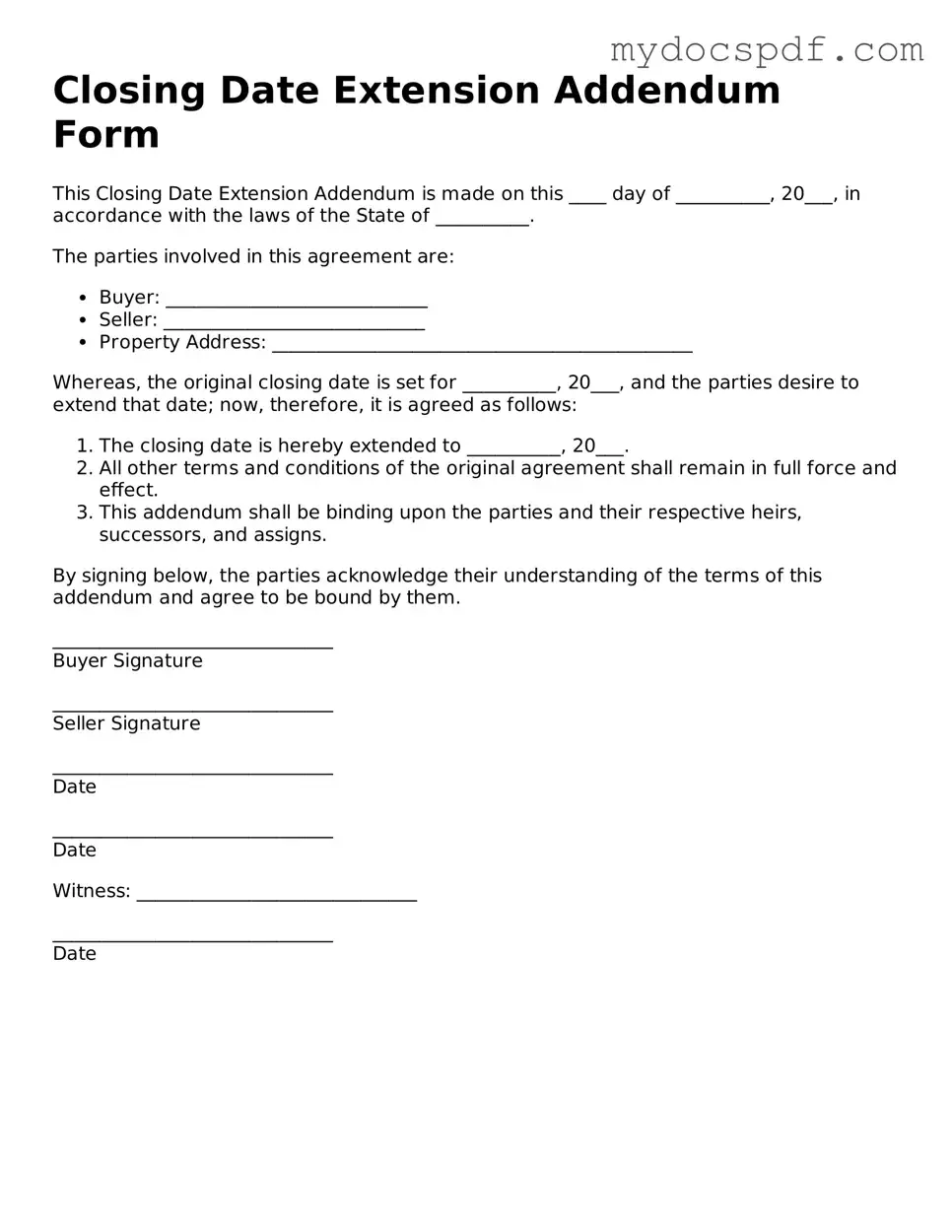Closing Date Extension Addendum Form
This Closing Date Extension Addendum is made on this ____ day of __________, 20___, in accordance with the laws of the State of __________.
The parties involved in this agreement are:
- Buyer: ____________________________
- Seller: ____________________________
- Property Address: _____________________________________________
Whereas, the original closing date is set for __________, 20___, and the parties desire to extend that date; now, therefore, it is agreed as follows:
- The closing date is hereby extended to __________, 20___.
- All other terms and conditions of the original agreement shall remain in full force and effect.
- This addendum shall be binding upon the parties and their respective heirs, successors, and assigns.
By signing below, the parties acknowledge their understanding of the terms of this addendum and agree to be bound by them.
______________________________
Buyer Signature
______________________________
Seller Signature
______________________________
Date
______________________________
Date
Witness: ______________________________
______________________________
Date
